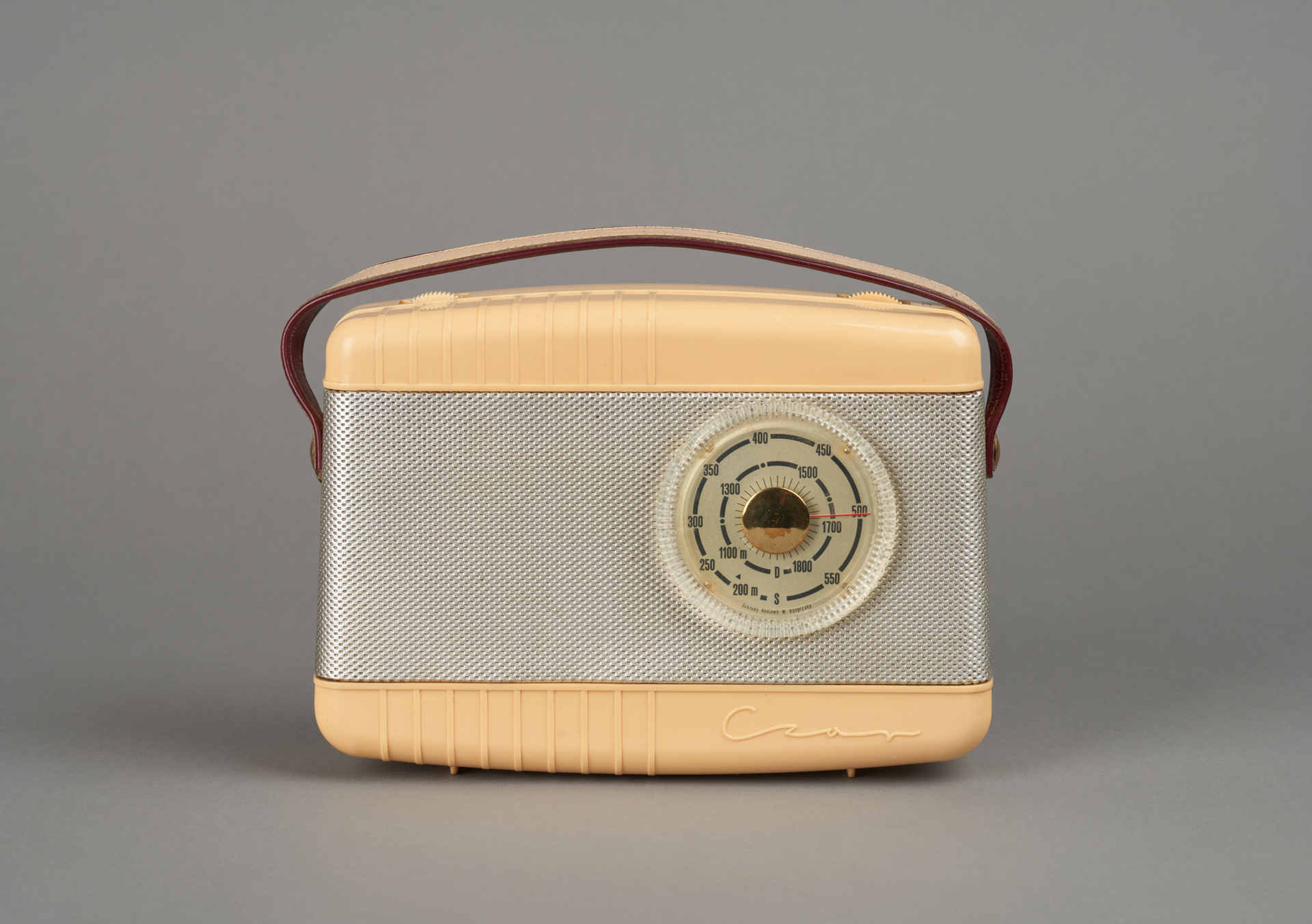
Czar radio
Zakłady Radiowe im. Marcina Kasprzaka,Creator
Zakłady Radiowe im. Marcina Kasprzaka
Time and place of creation
Place:
Poland
The Czar (Polish for “Charm”) mono radio receiver was launched in 1960 by Zakłady Radiowe im. Marcina Kasprzaka in Warsaw. In terms of the electrical system, it is a battery powered superheterodyne, comprising seven transistors and two germanium diodes. The maximum running time of the radio is between 60 and 120 hours. The radio operates in the medium and long wave bands, with amplitude modulation (AM). The Czar has five tuned circuits, allowing selectivity by means of separating the signal of a selected radio station from other stations at similar frequencies. The device was equipped with an automatic gain adjustment system, which automatically adjusts the voltage gain ratio, whose changes result from the influence of weather conditions on propagation of radio waves. The receiver has a built-in ferrite antenna and a Tonsil GD 14,5-9,5/1,5 W/C magnetoelectric speaker.
The cuboid, relatively flat housing of the receiver is made of plastic that is bonded to a broad strip of perforated sheet metal running across the front side. The glossy metallic surface contrasts with the cream colour of the remaining part of the housing. On the right, there is a transparent tuning knob with a scale, while on the left there is a built-in, oval speaker, hidden behind the perforated sheet metal; on the right, at the bottom, the name of the radio is inscribed in a handwriting-styled typeface. The top and the bottom walls are arched, with symmetrical stripes on the left part of both surfaces. In the top part there are button switches (a power and a band switch), and a leather handle strap.
The Czar was one of the first radios in Poland produced using printed circuit boards (and the first such design produced by the ZRK). The circuit board is made of an isolating material, with connections conducting electrical signals applied in the form of points and paths. The printed circuit board was developed in 1936 by Austrian engineer Paul Eisler, but work on this technology had begun earlier, at the beginning of the 20th century. In 1903, Albert Hanson created a concept description of flat foil conductors, which were laminated on a multi-layer insulating board. Some 10 years later, Arthur Berry patented a method of printing and etching boards, while Max Schoop patented the technique of thermal spraying of a structured metal layer. In 1927, Charles Ducas patented a method of plating circuit designs. Until 1948, printed circuit boards were used exclusively by the military and it was not possible to use them commercially.
Author: Filip Wróblewski
Czar radio
Zakłady Radiowe im. Marcina Kasprzaka,Creator
Zakłady Radiowe im. Marcina Kasprzaka
Time and place of creation
Place:
Poland











